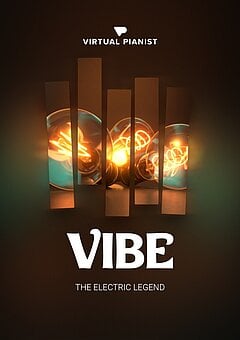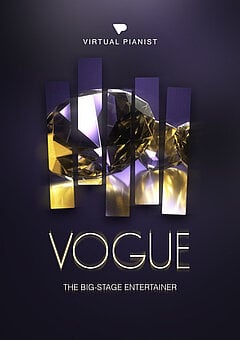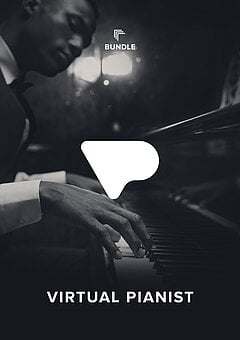The Ultimate Guide to Electric Piano
How to use these iconic keys to add emotion, soul and depth to your songs, even if you’re not a pianist.
DECEMBER 15TH, 2022
Origins
As weird as it sounds, the electric piano is not an electronic instrument — it’s built similarly to piano, but instead of striking strings and relying on natural amplification from the body, the instrument’s hammers connect with strings, reeds or tines and the resulting impulse is converted into electrical signals, which are then amplified and played through a speaker. The Neo-Bechstein was the original model, and for a while there were multiple different versions competing against each other. Ultimately, two iconic sounds won out and are still easily recognizable today.
One of these is the Wurlitzer, known for its bell-like, bright quality, and has a very particular sound that you might associate with music from the 80s and early 90s, especially in film scores. This can give music a “dated” quality, which is great if it’s a conscious choice; but in most cases, this isn’t desirable, and another type of electric piano sound is preferable. This is why almost without exception, when people think of an electric piano, they imagine a very specific sound: the Rhodes. From here on in, this is the sound we’re referencing when we discuss the electric piano.
Smooth like butter
One of the electric piano’s most common applications can be found in R&B; after all, no other instrument is capable of the same type of lushness as a soft electric piano background! It has a rounder, more subdued sound than a conventional piano, which makes it easy to tuck into a small ensemble arrangement and simply blend in. By playing softly, you can use an electric piano to add a rich ambient texture to any song, perfect for ballads and even gentler EDM like deep house (this sound is especially nice in the latter when sidechain-ducked or compressed off the kick).
You can keep the sound pretty dry if you prefer the timbre of the electric piano as-is, but you can make it even smoother and more expansive by sending it to a dense reverb, allowing it to fill out more space in the mix and wash over all the dead areas. This is better suited to electronic music than it is to R&B, but let your ear be your guide and go with the path that gets you to the sound you want!
Normally, this requires the touch of a professional, since while it’s beautiful when played just right, like any other instrument it’s easy to play improperly. Rather than accept this, we decided to do something about it and build a new Virtual Pianist: VIBE. If you don’t consider yourself a pianist and wish you could translate the sort of lush electric piano parts you hear in your head directly into your DAW, VIBE will allow you to do this and even expand on your ideas! It detects chords and maps them to its built-in extensive library of piano phrases, which lets you input the minimum amount of musical information and end up with a smooth, complex result with all the detail and nuance of the expert pianists we brought in to program the phrases. In no time you can add ultra smooth piano parts to any song without hiring a seasoned pro or writing every note yourself.
Dynamics
The electric piano isn’t just perfect for smooth, silky chords and backgrounds; it excels at dirty, punchy rhythms in funk, jazz, EDM, or nearly any other context imaginable! When you strike the keys on an electric piano hard, you get this rowdy distorted quality that leaps out of the speakers in a way nothing else can. (You can also get this sound from Virtual Pianist VIBE!) Try layering electric piano with synths and you can work this organic, rough texture into the beginning of each chord. If you’re using plucked synths, make the electric piano notes extra short, set the level just right and all you’ll hear is a warm inconsistency that gives your chords a little something extra.
The note releases of the electric piano are also worth noting. By design, a conventional acoustic piano has a housing that preserves some of the energy of each note even after it’s played. This makes it great for concert performances and gives it power and depth as a solo instrument, holding its own even against large ensembles ... but this doesn’t translate perfectly to every musical context. There are times when you want a short, sharp release that keeps the energy more focused — and because of the way electric pianos are constructed, its note releases are nearly instantaneous.
Let’s revisit synth layering for a moment; if you line up the releases of your synths and electric piano perfectly (or simply copy and paste the MIDI, as long as it has varied velocities to make things less static), you’ll get a tasteful little bump to each note cutoff but a clean edge to every chord. Work this subtly into funky genres like nu disco or even house music and you’ll be amazed at how much additional character it adds to your arrangements!
Wrapping up
The electric piano is an incredibly versatile instrument, with a unique way of making song arrangements sound fuller than you would ever imagine by listening to it in isolation. This makes it a great fit for R&B, ballads, deep house, and a host of other genres that can benefit from a lighter touch. Normally this means either taking the time to build proficiency on a keyboard or hiring out for all your keyboard parts to get the sound you’re looking for, but thanks to Virtual Pianist VIBE, that’s no longer true! You can simply choose the chords you want, enter them into your DAW and let VIBE do the work of turning this into a fully-fledged piano part.
There are also tons of options for choppier, more staccato parts as necessary — check out the Seven Over One Style option if you want some funkier options as well, especially when paired with the Hype Character setting. Any electric piano part you can imagine, you can realize it using VIBE; have fun, experiment, and go make some great electric piano parts!
About the Author
Harry Lodes is a copywriter, marketing consultant and content writer for audio and ecommerce brands. He lives in the Philadelphia area, releasing Eastern/Western hybrid EDM under the artist name KAIRI hearkening back to his roots in Berklee College of Music.
Stay up to date
Sign up and we’ll send you an e-mail with product news and helpful stuff every now and then. You may unsubscribe at any time.
Defy Limits
We develop software solutions that enable people to create, consume and interact with music.




